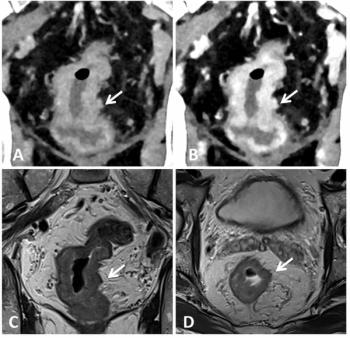
Preoperative MRI Detects Spinal Injuries
HealthDay News - Signs of spinal cord injury on MRI give indication of neurological prognosis after surgery
HealthDay News - More than 90 percent of adult patients with cervical spinal cord injury without radiographic abnormality (SCIWORA) have signs of spinal cord injury that are identified by preoperative magnetic resonance imaging (MRI), which give an indication of symptom severity and prognosis, according to a study published online Feb. 1 in Spine.
Masaaki Machino, MD, from Chubu Rosai Hospital in Nagoya, Japan, and colleagues examined image features on MRIs in 100 SCIWORA patients. In the acute phase, patients all underwent functional X-ray and MRI. Occurrence of spinal cord damage, as measured by intramedullary increased signal intensity (ISI) and prevertebral hyperintensity (PVH), was evaluated in the MR T2 sagittal view. Neurological status recovery rate and American Spinal Injury Association impairment scores were assessed using the Japanese Orthopaedic Association scoring system for cervical myelopathy (JOA score).
The investigators found that preoperative MRI identified ISI in 92 patients and PVH in 90 patients. PVH and ISI range increased in severely paralyzed cases. A significant negative association was identified between the ISI range and preoperative JOA score. A greater ISI could predict poorer outcomes following surgery.
"ISI and PVH were seen in more than 90 percent of study patients with SCIWORA. The range of ISI significantly reflected the severity of symptoms and prognosis of neurological outcome," the authors write.
Copyright © 2011
Newsletter
Stay at the forefront of radiology with the Diagnostic Imaging newsletter, delivering the latest news, clinical insights, and imaging advancements for today’s radiologists.




























